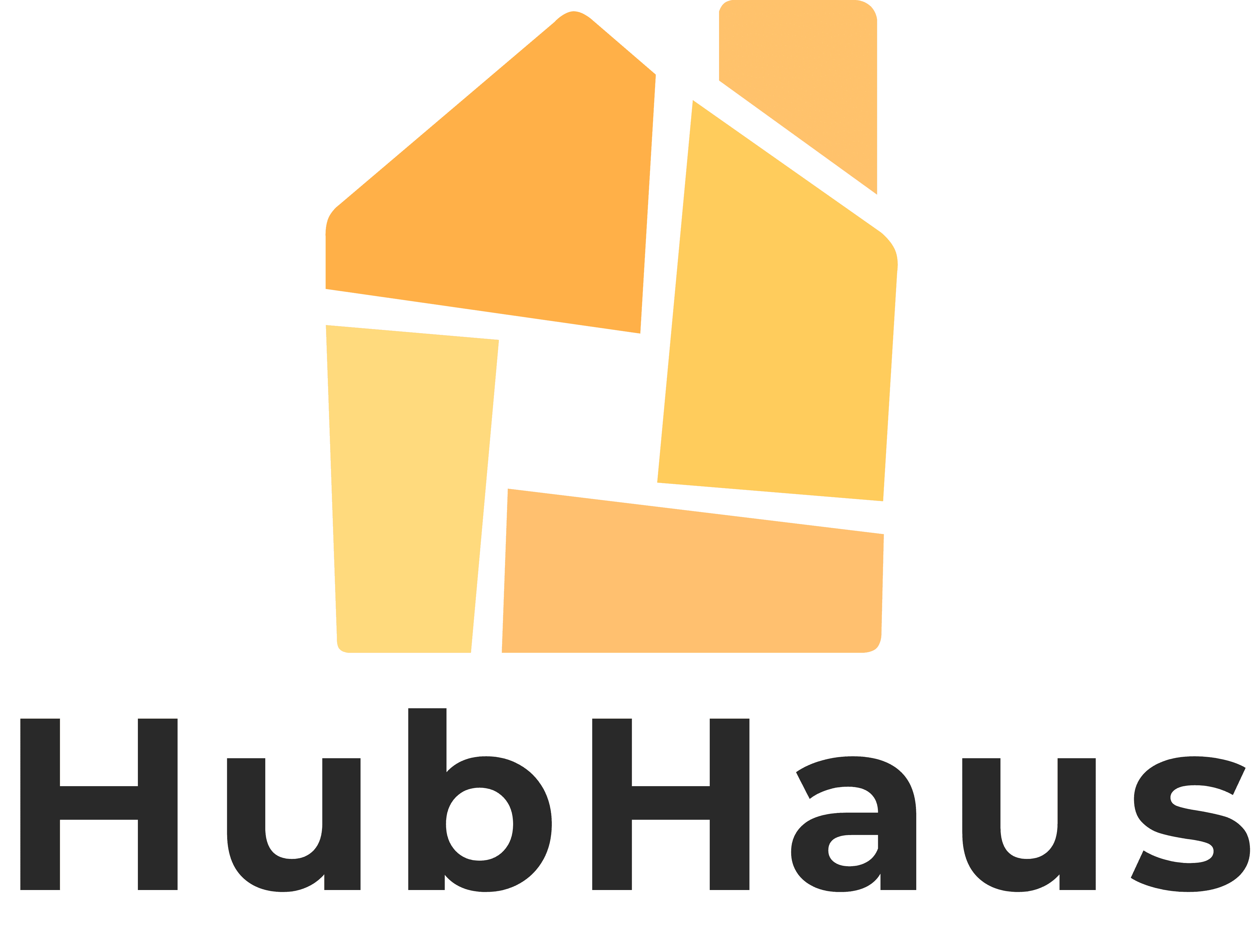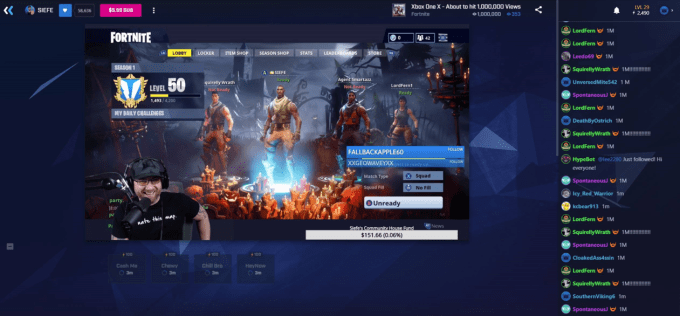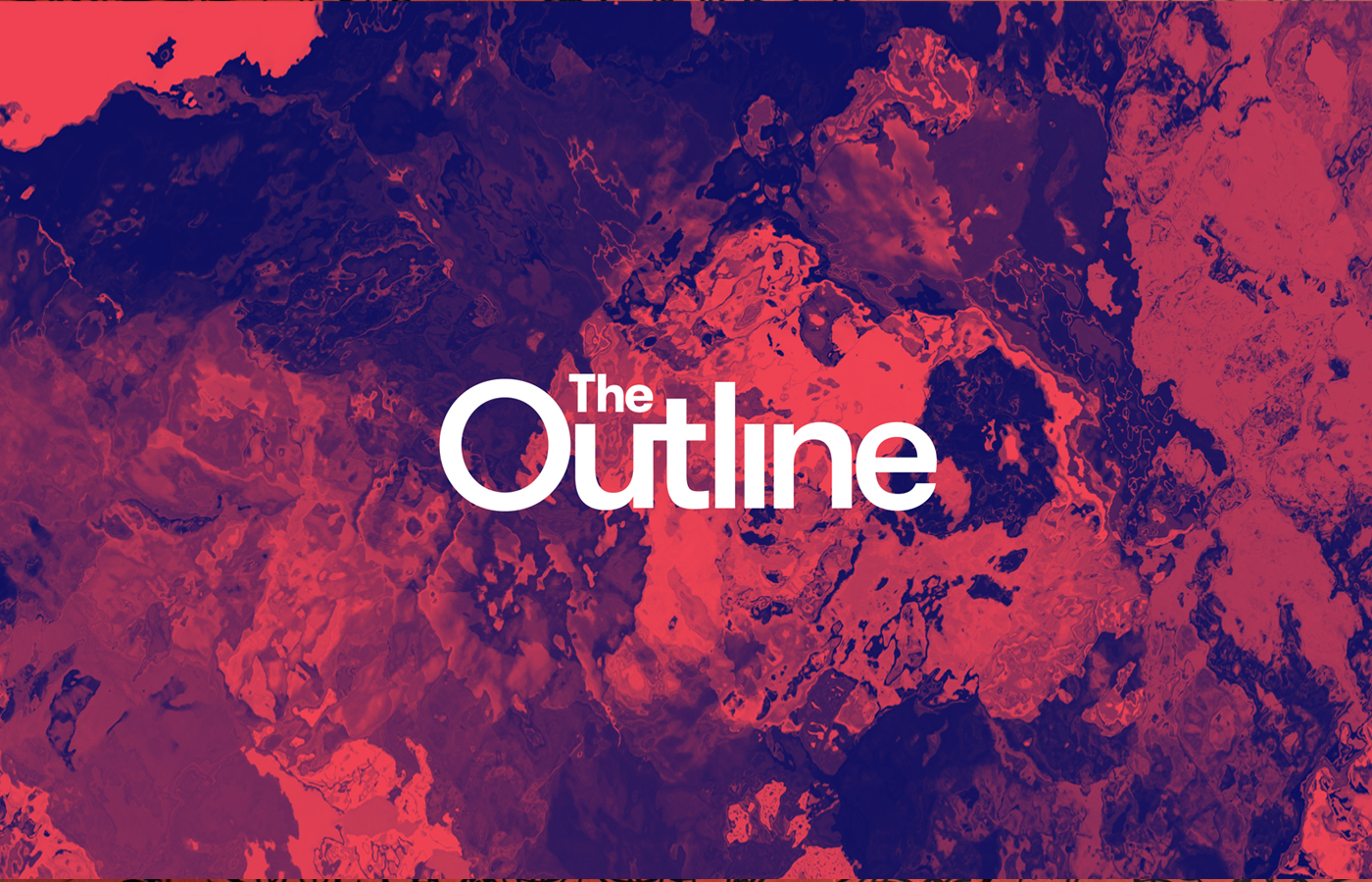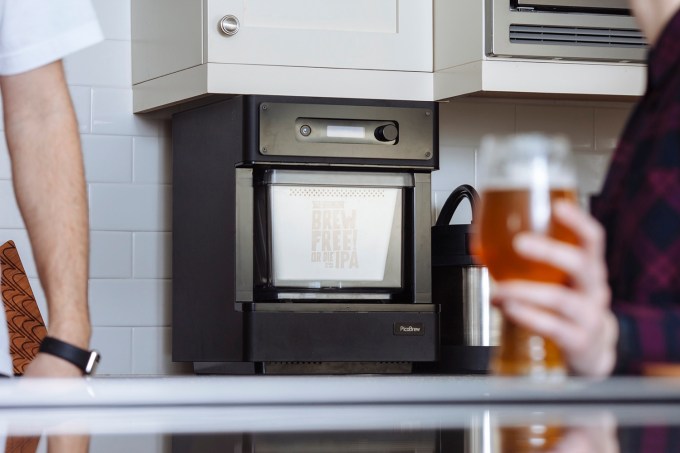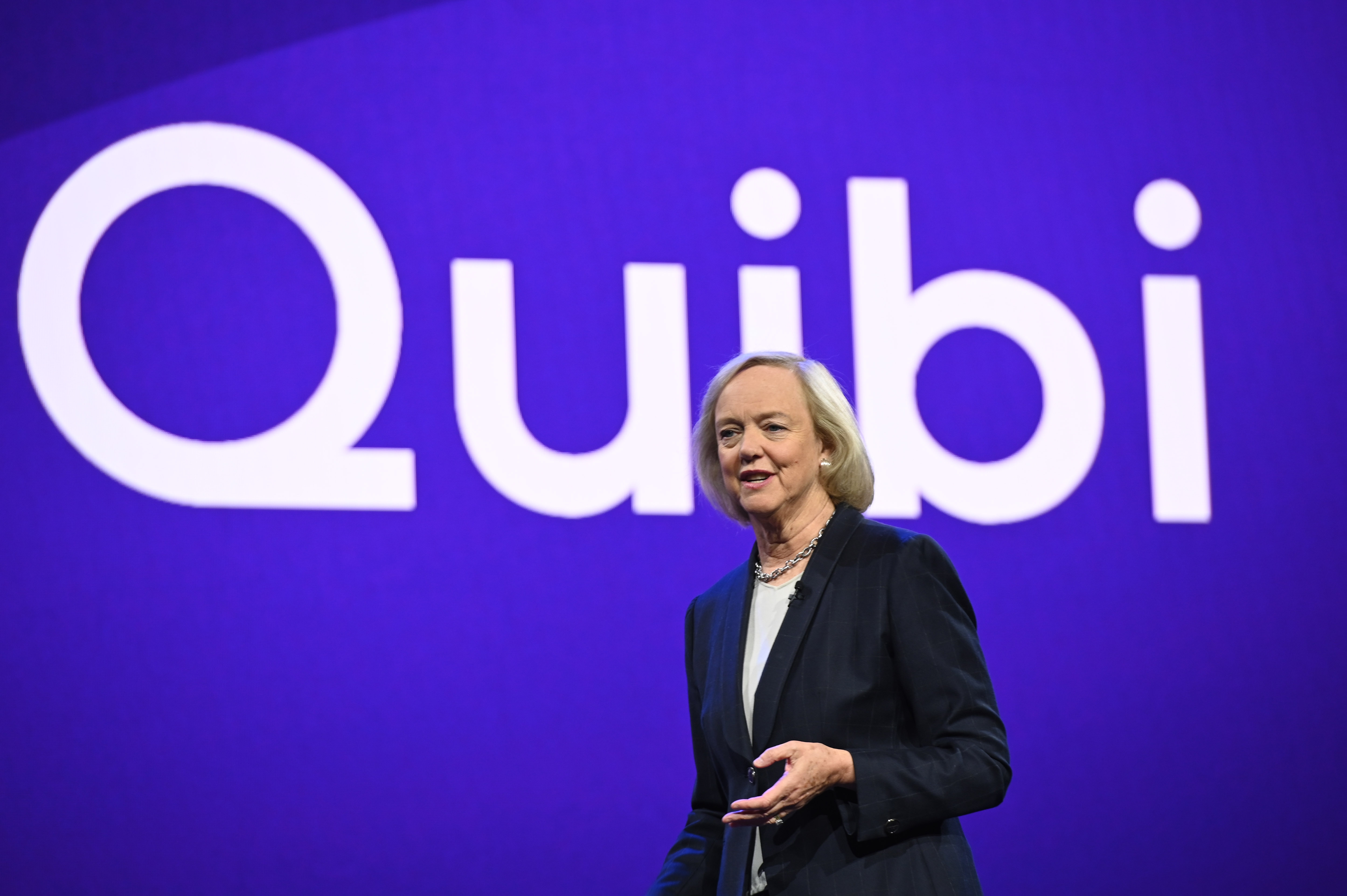It goes without saying, but 2020 was a bad year for a lot of people.
For many, it was a year of stress, of sadness, and anxiety. It was a year of missing friends and family; of just getting to the next day, even as each day seemed to blur into the last.
As we’ve done at the end of each of the past few years, we invited our team to look back and highlight some of their “favorite things” — the things that, as we look back from the depths of December, put smiles on our faces, or helped us pass the time, or taught us some new skill. Most years this question feels like “What made your year better?” This year it felt more like “… What made your year suck less?”
Our definition of “things” on this list has always been incredibly fuzzy by design. “Things” can be whatever makes sense to the writer. “Things” can be podcasts, or songs, or movies, or people, or concepts. Some of these things are new to the world in 2020. Others are things that have been around for years (decades, even!), but popped back up in our lives this year. Whatever the case, we hope you find some inspiration; some new thread to pull, some new song to sing, or some new thing to love.
Zack Whittaker, Security Editor
WBGO 88.3FM
As a kid I used to fall asleep listening to the late-night talk show radio shows from my bedroom in England. These days I’m all about WBGO, a New Jersey public radio station broadcast from Times Square. It plays jazz all day, every day, and that’s about it. Jazz doesn’t want to talk about politics around the dinner table or post anti-vax conspiracy theories to Facebook. It’s perfect escapism from the news firehose. We have WBGO playing quietly on the radio in the kitchen throughout the day. And since it’s an easy listen, I often put it on as I work from my desk. I even bought a HomePod mini as an early Christmas treat so I can listen all day long.
Cross-stitching

Image Credits: Zack Whittaker
The TV dried up pretty early on and there wasn’t much else to do, so I took up cross-stitching. It’s easy to learn — similar to a Paint by Numbers but with sewing — and requires little skill so it’s ideal for me. It’s a fantastic way to wind down and forget about the actual dumpster fire of a year it’s been.
Natasha Mascarenhas, Reporter
Call Your Girlfriend (Podcast)

Image Credits: Call Your Girlfriend
In a year where every relationship is a long distance relationship, Call Your Girlfriend has been a must-listen podcast. It’s been running since 2014, but I only picked it up this year because I was looking for ways to think about adult friendships that are platonic. I think the topics put a lot of coronavirus fatigue into eloquent context, such as consent conversations when people have different risk tolerances, how to find joy in this time, the science behind friendship. The show, co-hosted by Aminatou Sow and Ann Friedman, describes itself as a “podcast for long-distance besties everywhere.” I’d add that it’s an exhale during a time where all of us are very, sometimes subconsciously, tense.
Graffeo coffee
San Francisco’s Graffeo Coffee is one of North Beach’s remaining treasures. The little coffee roaster was my bi-weekly stop during my quarantine sanity walks all throughout this year. And I still order the beans even though I’m not in SF anymore! Good people, small business, and get the beans whole and dark roasted.
Brian Heater, Hardware Editor
Waxahatchee Saint Cloud

Image Credits: Waxahatchee
Not to put too fine a point on it, but music might have saved my life this year. And thankfully there were some terrific albums this year — Lomelda, Thundercat, Denzel Curry, Open Mike Eagle and Death Valley Girls to name a few. But Waxahatchee’s latest was just a huge ray of country twang-infused pop-indie folk. Start with “Fire” and go from there.
Moby Dick by Herman Melville
Some things are worth revisiting throughout life. They’ll never change, but the lives we’ve led can’t help but profoundly impact our relationship to them. It’s been said that Moby Dick holds the secrets to the universe within its 135 chapters. But while Melville may have laid the groundwork for such revelation, it’s clear he couldn’t make heads or tails of the results. Moby Dick is a singular work in American literature. It’s profoundly strange and funny and disjoined and beautiful and sad. It’s also wildly, wildly weird. It’s a perfect quarantine companion.
Orba by Ariphon
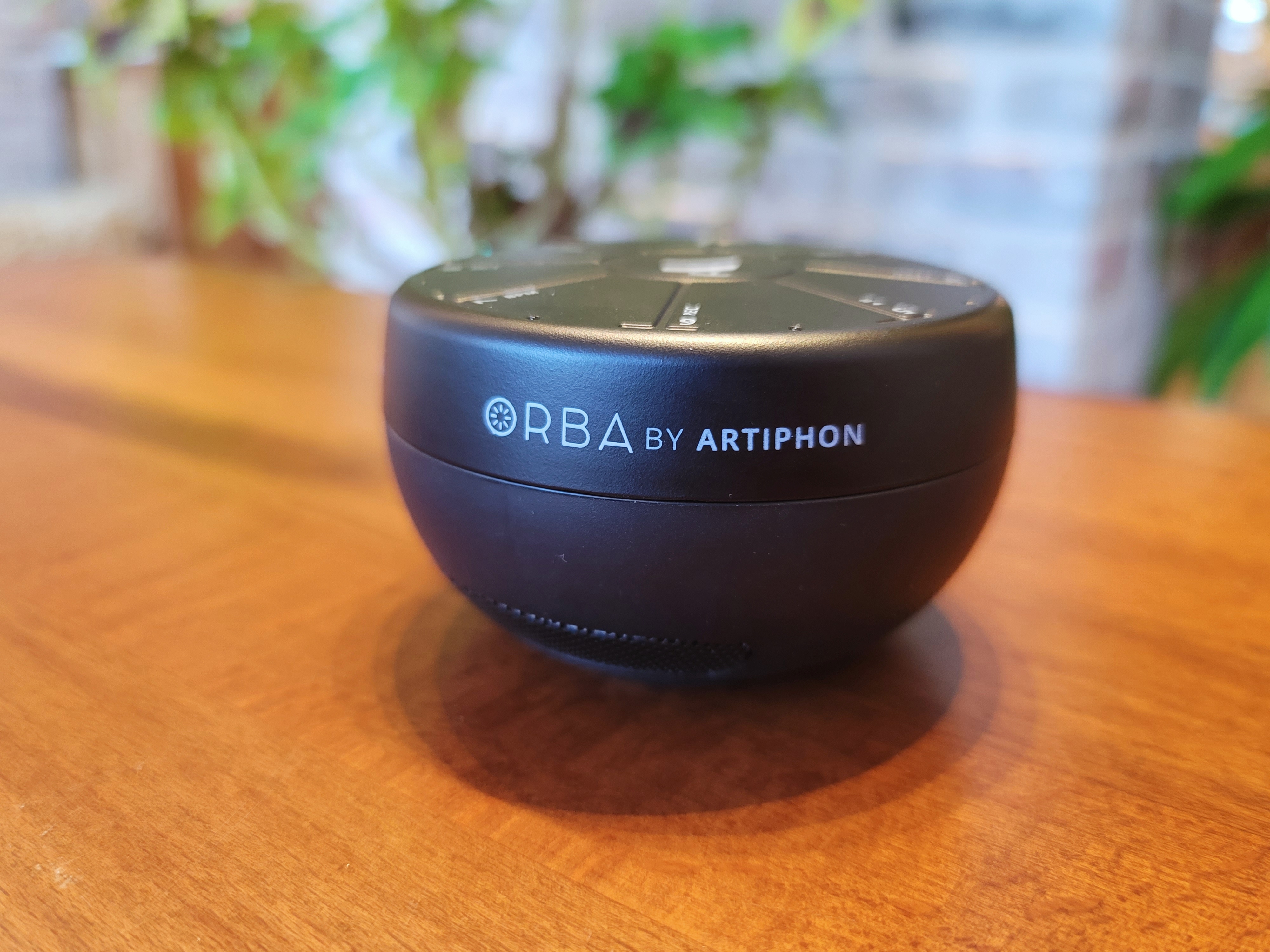
Image Credits: Brian Heater
I’d been waiting to play with Artiphon’s Orba since meeting with the company back at CES 2020 (those weird and wild days when we used to jam humans into a room to look at products). The $99 gadget is probably the closest I’ve come so far to a device that can foster music creation among the non-musical. It’s also a terrific little time killer and great for blowing off a bit of steam between meetings.
Lodge 49
Maybe Lodge 49 is an uncynical critique of a deeply cynical time. It’s a goddamn ray of sunshine in a dark moment that was, naturally, too beautiful to live. Perhaps the (cancelled) AMC show is an inadvertent object lesson in appreciating what we had, rather than lamenting what we lost. Maybe some day it will return as a one-off Netflix season or a Kickstarter movie when everyone is on-board with the show three years from now and we’ll all be excited while bemoaning the fact that it just couldn’t capture the magic of the original.
Neesha A. Tambe, Startup Battlefield Editor and Head of Community
1-min dance parties

With very high risk parents and a doctor brother the COVID fear starts to settle in your bones. To keep the sad panda at bay, I started to do one minute dance parties in the morning. Just me and Spotify on random – no judgement, no expectations, just movement. If it feels hard to get started, start with your big toe and watch the good vibes start to flow 🙂 A little free and crazy dancing to start the day makes for a bright and beautiful day.
Baking
With the privilege of working from home, I’ve gotten very much into baking and cooking. I love love gifting cooked and baked goods – fresh bread, brownies, pumpkin tarts, sauces, soups etc. to my friends. It’s amazing how a little gift of food always brings an immediate smile to the faces of the people we care about! (Esp. if they are vegan lol)
Digital Phone Banking
It’s clear that we need to remain actively engaged to keep our democracy strong. I’m extremely grateful for digital autodialers that allow me to advocate for those that most need the support without actually having to be in specific place or outside. Not only is it our duty, but it makes me feel good to know that I am making a difference in my small way helping folks make it to the polls. It’s so fun to talk to people all across the country and connect with them on the humanitarian issues that matter most. Yay democracy!
Devin Coldewey, Writer
Picross/Nonograms
In a year when seemingly nothing was as it should be, I discovered the puzzle genre that I’ve been looking for all my life — and apparently it has been around just as long. Filling in the rows and columns according to the provided numbers is simple and peaceful, yet occupies my mind almost completely, allowing a safe, mobile dissociation from the perils of real life. The best one I’ve found is Konami’s Pixel Puzzle collection, which is free, easy to use, and has fun pixel art from retro games.
Tenet

Image Credits: Warner Bros.
Christopher Nolan’s latest isn’t the best movie I saw this year, but as with Inception, no one even tries to make movies like this except him, and I marvel at the pure plate-spinning audacity of his filmmaking. Maybe you think it’s pseudo-intellectual wankery, but… well, perhaps it is. But it’s a prime example of the species.
Hyori’s Bed & Breakfast

Image Credits: Netflix
After the heartbreak and disillusionment of Terrace House’s tragic end, we needed another gentle reality show showcasing the ordinary (yet still strange to me) everday lives of people in another country. I found Hyori’s Bed & Breakfast very late and it has filled the gap (though another Korean entry, Three Meals a Day, is also worthy). Featuring a retired pop star and her husband as they attempt to convert their home to a B&B, it’s funny, weird, and full of dogs and genuine human moments.
Henry Pickavet, Editorial Director
GT’s Strawberry Serenity Kombucha

Image Credits: GT’s Kombucha
I cannot leave a grocery store without scouring the beverage section for kombucha. And not just any kombucha. The sweet red label of a GT’s Strawbery Serenity kombucha must be in stock and ready for pillaging or it would have been a wasted trip. I have a problem. Signed, The Kombucha Bandit of Sacramento.
Willow.tv

Image Credits: Robert Cianflone / Getty Images
When I left Australia in 2010 after having lived there for three years, I brought back with me a love of cricket. Time zones, as well as virtually no one in the States to discuss it with, made it hard for me to keep track of what was happening on pitches all over the world. My subscription to Willow.tv almost fixes all of that. I’m still facing some sleepless nights as Australia takes on India in the summer tour Down Under, but at least I can watch it live.
Natasha Lomas, Senior Reporter
Fitness Blender
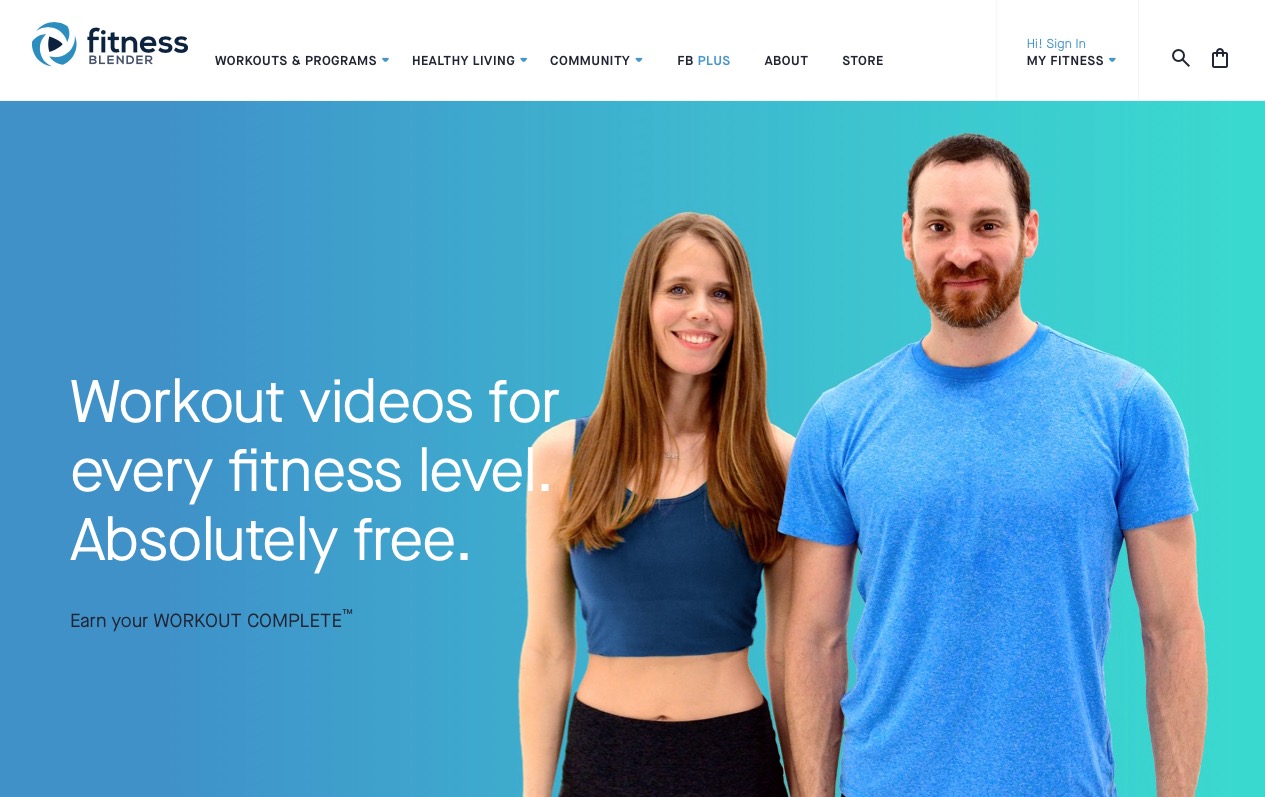
Image Credits: Fitness Blender
With many months of 2020 spent confined almost entirely to a one-bed apartment, with all gyms closed and a total ban on going outdoors for exercise, staying fit has required some changing up of the usual routines. To wit: I’ve found Fitness Blender’s gimmick-free training videos a total god-send. Now I almost look forward to HIIT! Thanks so much guys. Plus one more (related) positive vibe this year: My favorite yoga teacher, who lives in another city, started doing Zoom classes remotely — truly a silver lining to 2020’s virtual everything. Thx Chloe!
UberTape

Image Credits: Natasha Lomas
No, not a surveillance camera for safely riding in Ubers — UberTape is a brand of kinesiology tape that’s been another saving grace in an injury-prone year when I also discovered some new and unfun skin sensitivities (happily this tape is “hypoallergenic and latex free”).
What actually is kinesiology tape? It’s support tape for joints and muscle. I was introduced to it by my physiotherapist and can confirm it has made the difference between being able to train pain-free or not. It’s miraculous stuff — so long as you position it correctly (with the right amount of stretching). So whether 2020 has hit you with achilles tendonitis, shin splints, plantar fasciitis, tennis elbow or runners knee — and this year has surely hit most of us with some new and unusual injury (and plenty more besides) — I’m happy to report a little stretchy tape goes a long way. So thanks, UberTape, for helping make 2020 a little less painful.
The Wire (again)
I first watched The Wire about ten years ago when it was first screened on UK terrestrial TV. I remember taking a while to sink into it at first — Baltimore gang slang was pretty exotic (to a Brit) back then — but after a few episodes we were hooked on McNulty, D’Angelo, Omar & crew just like McNulty is hooked on Jameson and cheap bar thrills. The full five seasons were duly consumed and judged an incomparable master work.
A decade on and our 24/7 connected world is now one gigantic phone-enabled wiretap. (Nor do any of the mega corporations surveilling our every blink have a proper legal base, much like Lester didn’t for that last wiretap. Tsk.) The show was also prescient in pointing out the fragile business of reporting truth vs the tacky lure of fake news. Truly ahead of its time — before you even start in on the marvelous cast of characters and intricate societal portrait, showing how corrupt, stupid, vindictive, self-interested decisions by a handful of people in positions of power trickle down, again and again, wreaking misery on the next generation and condemning the already vulnerable to yet more suffering.
Rewatching The Wire at the end of 2020 has, fittingly enough, kept me sane through a second lockdown and Europe’s second (or third) waves of COVID-19, now

Image Credits: Natasha Lomas
with an unfestive holiday season fast approaching. I’m just sad they only made five seasons. Can someone please call David Simon?
My DIY training wall (and other projects)
Staying sane in lockdown has definitely meant keeping busy. So when not hard at work reporting for TechCrunch (or training for climbing), I’ve made sure to have a few creative projects on the go — including a fun collaborative writing gig with my friend (and former TCer, John Biggs). But the project that’s delivered the most tangible results (so far) is my DIY training wall — which is part training tool, part artwork (I can’t take art credit but painting the wall was my idea). Planning and making the board kept me busy through the first lockdown. Being able to use it for training circuits has kept me going through the second wave of gym closures, so I think that’s a good result.
Greg Kumparak, Editor
Hunt for the Wilderpeople

Image Credits: Madman films
This one was released in 2016, but somehow flew under my radar until it was added to Netflix in late 2020. Directed by the WAY TOO DAMNED TALENTED Taika Waititi (who also directed What We Do In The Shadows, JoJo Rabbit, and the best episode of The Mandalorian), it tells the tale of Ricky Baker, a defiant teen who reluctantly finds himself under the guardianship of new foster parents in the New Zealand bush. I can’t say much more without spoiling it, but Waititi managed to cram a whole lot of movie (and emotional ups and downs) into an hour and forty minutes. Skip the trailer and just dive in.
Jackbox Party Pack Series

Image Credits: Jackbox Games
I miss friends. I miss board games. I miss board games with friends. The Jackbox series, streamed over Zoom, brings back a little bit of that energy without requiring too much setup or explanation. Pick a game, fire up a zoom screen share, play. Each “box” has a handful of different games, and everyone plays using the phones they already have as controllers. There are 7 different boxes, and you can often find the older ones on sale. My favorite boxes are the ones that include Quiplash, Drawful, Fibbage, and, with the right group of trivia loving weirdos, Trivia Murder Party.
Darrell Etherington, Science Editor
Beer delivery
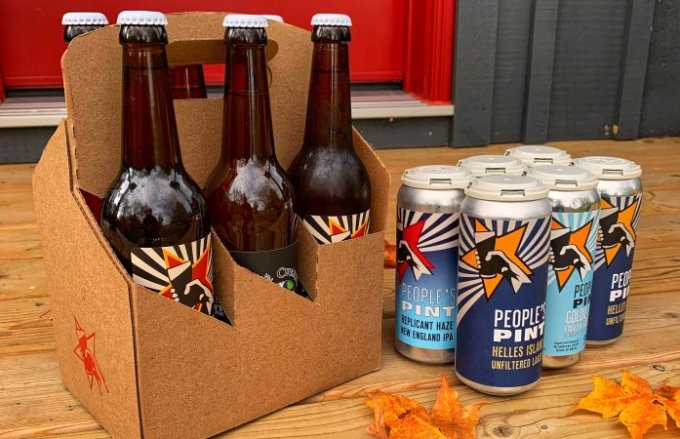
Image Credits: People’s Pint Brewery
Once a week, I get beer delivered to my home and it’s great. I rotate between a few local breweries, including Bandit Brewery, Halo Brewery, Left Field Brewery and People’s Pint Brewing Company. If you’re located in Toronto or the surrounding area, look them up and enjoy.
Brilliant Smart Home Control

Image Credits: Brilliant
These panels that replace either one switch or a bank of switches are fantastic for any smart home using most of the popular products, including Ecobee, Hue and Switch. They also act as video intercoms, and can automatically provide live feeds from your Ring doorbell when someone’s at the door.
Freewrite Traveler

Image Credits: Darrell Etherington
Astrohaus’ second device is a travel-friendly version of their e-ink typewriter. It’s great even if you’re only traveling as far as the backyard, as a lap-friendly focused writing device that has no real competition anywhere. It’s the cure for doomscrolling.
Twelve South HiRise

Image Credits: TwelveSouth
If you’re used to working from a notebook computer at an office, you probably had some kind of rise or monitor. At home, a stand like the adjustable Twelve South HiRise is clutch for comfort and ergonomics.
Romain Dillet, Writer
Thelma & Louise
The best way to escape from COVID reality and fight patriarchal societal structure at the same time. A masterpiece that will leave you speechless and push you to blaze your own trail across the desert.
Megan Rose Dickey, Senior Reporter
Tony’s Chocolonely Milk Chocolate Caramel Sea Salt

Image Credits: Tony’s Chocolonely
Tony’s Chocolonely has been my saving grace this year, and last year. And the year before that.
I’ve been a chocolate addict since I was a wee one — back when a Hershey’s chocolate bar only cost $0.35 at my local corner store. Tony’s Chocolonely costs a pricey $5.95 per bar, but it is so worth it.
Alex Wilhelm, Senior Editor
Reading books in the bath
This isn’t something that you can buy, but it’s something I have spent inordinate amounts of time doing this year. Reading is good, baths are good, and together they provide the perfect place to read lots in a one sitting without winding up on Twitter by accident.
Stacey Cohen, Strategic Sales and Partnerships
Zoom Yoga
The number one way I stayed sane this year was with the amazing opportunities to practice yoga with my favorite SF teachers, like Janet Stone, Rusty Wells, Jeremy Falk, Peter Walters, and Melody Pfeiffer just to to name a few. This gave me something to focus on (especially during these winter months of lockdown). Janet Stone in particular created a platform that basically became group therapy and such an amazing support system. Outdooryogasf saved my life while living alone during a pandemic! The innovation around yoga and creating zoom classes, integrating music, creating community was bar none the best experience for me in 2020.
Friday night zoom movie nights
I can’t believe I am still doing this a year later. Every Friday, my friends log in to watch movies together. Most of the time I fall asleep, but we’ve watched so many movies and it’s a great way to stay connected.

Image Credits: Tony Sala
Tony Sala, Director of Sales
New Family
While it was difficult to be separated from friends and family, the smile from a little one can melt your heart. Aria Bella born in the middle of the pandemic, May 2020.
The Great Outdoors
No, not the movie. The actual physical real world outdoors. For me in 2020, the great outdoors was a great escape (no, not another movie reference). A good ol breath of fresh air goes a long way towards positive mental health.
Bryce Durbin, Illustrator
Duolingo

Image Credits: Duolingo
I started using this app on a whim in January and kept going after I realized it was free (albeit ad-supported). The courses, built around sample sentences that test reading, speaking and hearing, introduce vocabulary and grammar with fun animated characters. Nothing can take the place of practicing the language with native speakers, but this is a good place to start.
What Had Happened Was (Podcast)
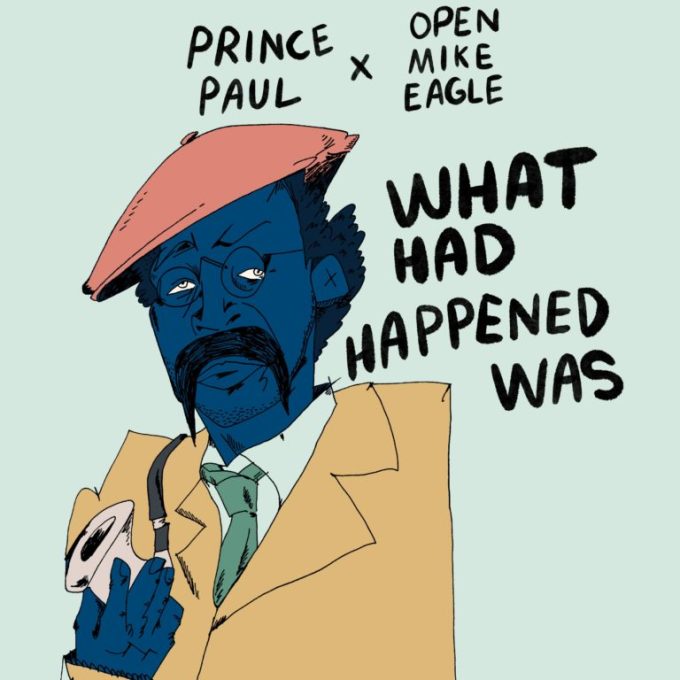
Image Credits: What Had Happened Was
The best new podcast of the year is two dudes talking, but not just any dudes: polymath Open Mike Eagle interviews legendary producer Prince Paul over the course of 12 episodes about the many varied projects of his 30-plus-year career. Whether you are deeply familiar with groups such as De La Soul and Handsome Boy Modeling School or are ready to dive in, these stories are fascinating.
Local pub trivia (Online)
A pub in my town would host trivia every Thursday, pre-pandemic. The same week things shut down, clever organizers cobbled together an online version using a YouTube stream and Google forms, attracting dozens more teams than could ever attend in person. The pub has recently shut down but the game goes on, now in its fortieth week. (My small team has yet to win.)
Safa Aliabadi, Events Partnerships
Peloton

Image Credits: Peloton
Since all the fitness classes that I used to take are no longer availabe (OrangeTheory, Barry’s, SoulCycle), the Peloton has kept me active and sane. I love the variety of classes it offers, from yoga to bootcamp. Also, being able to take a class at my schedule and convenience makes it even more convenient. It’s going to be hard to go back to a studio once (if ever) we’re back to normal.
Catherine Shu, Writer
Audiobooks read by Juliet Stevenson
I’ve depended on audiobooks for a lot of my reading over the past months and realized how rare a narrator like Juliet Stevenson is. She subtly uncovers depths of meaning in sentences, especially dialogue, without overpowering them with her own intepretation. Each phrase feels like it’s been lit from within.
I’m not the only one person who relied on Stevenson’s narration to mentally escape this year. In a Lithub article, Scott Spencer, who has spent more than 300 hours listening to Stevenson reading, wrote, “Even a fatuous idea becomes interesting as she has enlarges and illuminates it with her voice—that voice which is the audible expression of her profundity and humanity.” Fortunately for Stevenson’s fans, she is a prolific narrator, with over 180 titles listed on Audible. Her work spans many genres, so if you’re looking for somewhere to start, I highly recommend “The Paying Guests” by Sarah Waters.
Lovecraft Country

Image Credits: HBO
“Lovecraft Country” is a show that stays with you for a long time after you watch it. Honestly, I kind of regret binge watching it, because in hindsight it would have been better to let each episode marinate in my head for a couple days before plowing back into the narrative.
If you’re in the same place, I highly recommend reading Kinitra Brooks’ reviews on The Root to help you unpack the show. Dr. Brooks is a literary scholar who focuses on Black women and genre fiction, and her essays explore each episode’s treatment of horror themes and historical context (though “historical” feels like the wrong word to use here because even though the show takes place in 1955, all of its commentary on racism is still highly relevant today). HBO’s official podcast, hosted by Ashley C. Ford and “Lovecraft Country” writer Shannon Houston, is also wonderful.
Warrior
Now that Cinemax has stopped producing original content, the future of “Warrior,” based on a concept developed by Bruce Lee, is unclear. I’m really hoping that it gains enough new viewers on HBO Max to warrant another season and tie up loose ends, because I’ve become emotionally invested in many of the characters.
There’s Ah Sahm (the lead, played by Andrew Koji), of course, but I also want to see how Young Jun (Jason Tobin) copes with finally gaining real power, and learn more about the women characters, especially Mai Ling (Dianne Doan) and Ah Toy (Olivia Cheng), whose motivations were really only hinted at in the first two seasons. As someone who grew up when yellowface was still routinely broadcast on TV, it’s extremely meaningful to see a show where the majority of the cast is Asian. I love how the show plays with language and accents to depict how the Chinese characters appear to one another, versus how to appear to white characters, and also how it deftly switches between honoring and subverting martial arts movie tropes.
Steve O’hear, Writer
Virtual events
I actually feel slightly guilty about this one — hey, I’m British, it’s what we do best — but the move away from in-person to virtual events has been an amazing leveler for me and net positive overall.
I use a wheelchair and have other physical challenges that make traveling for work more difficult and energy-sapping, so historically I’d only get to do one or two events per year as a moderator or speaker. That all changed in 2020 and by my count I’ve done well over 10 events, including high profile conferences like our own Disrupt, CogX and Slush. Ceilings are often broken when and in ways you least expect them to be.
Endlesss
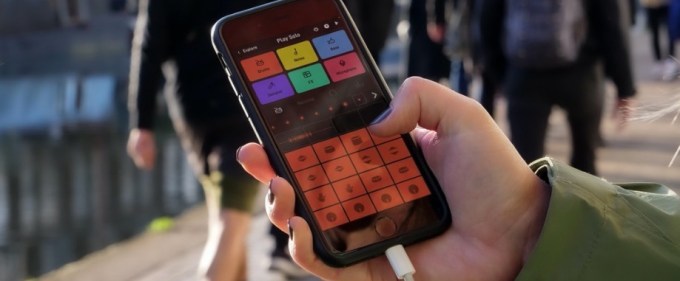
Image Credits: Endlesss
Launched on March 31st, just as the U.K. and many other countries around the world first entered lockdown, Endlesss is a collaborative music making app (iOS and Mac) that combines software recreations of drum machines, samplers, synths and FX, with a “tap to loop” workflow that should be familiar to anyone who has used a looper pedal or loop-based sequencer.
What makes Endlesss different and exciting is the way these loops or riffs can be shared or remixed by others participating in your jam — essentially sending musical messages back and forth as if it were a chatroom. Unsurprisingly, for many (myself included), the app has been a creative, and dare I say, therapeutic outlet during the pandemic.
Anthony Ha, Senior Writer
Beyond a Steel Sky
As someone who grew up loving classic adventure games, I found this Apple Arcade title to be a near-perfect update of the old-school formula.
You play as Robert Foster, a man whose search for a missing child draws him back to a seemingly utopian city after years in the wilderness. The game is filled with colorful characters and locations (designed by “Watchmen” artist Dave Gibbons), with puzzles that rely less on ridiculous combinations of inventory items and more on conversation and hacking the various bits of technology around the city. The game is a sequel to the 25-year-old “Beneath a Steel Sky,” but I didn’t have a problem jumping in fresh, and although it’s a bit prone to crashing on my iPad, I’ve happy to endure a few bugs while exploring the fascinating world.
Geek’s Guide to the Galaxy
David Barr Kirtley’s science fiction-focused podcast has been around for more than a decade, and it’s been my favorite podcast for most of that time. My appreciation only increased this year, when I frequently found myself desperate to think about things other than the pandemic and the election.
The show’s in-depth author interviews and panel discussions allowed me to lose myself in hours of conversation about bad video game movies, or “book club” discussions of science fiction classics like “Dune.” (Dave was kind enough to ask me to join for an episode about one of my favorite books, “Foundation,” and that conversation was one of the highlights of my year. But now I can’t listen to the episode without hearing my dumb voice!)

Image Credits: Robin Roy Julius
Robin Roy Julius, Lead Software Engineer
Time
Working from home has allowed me to gain back time with my family. This was the silver lining to 2020 for me. I was able to spend more time with my family. There wasn’t time taken to travel to work and home. I was at my workplace at home. I could spend time with my wife and kids within 3 steps of my work area. It was sometimes rambunctious, noisy, loud, chaotic or all of the above, but it was well worth being able to spend more time with them.
Lucas Matney, Reporter
Future subscription
I’ve been paying for Future’s exercise plan subscription since covering the company’s Series B raise back in October. The app pairs you with a personal trainer who communicates with you over text and makes guided workout plans for you. The service’s $150/mo is certainly nothing to balk at, but during a year when gyms have shuttered and the amount of time I’ve spent inside my apartment skyrocketed, it’s grown a lot harder to draw boundaries inside my day and the app has done wonders helping me mentally carve out time to get active.
The weakness of the program is a lack of live feedback especially when it comes to safely pulling off a new lift or routine, but the key to making the most of the platform is asking more of your trainer in between sessions and getting that guidance. Paying for Future has been a luxury but it’s been a game changer these past few months and I’m hoping I can keep this quarantine habit going.
Luxury sweatpants
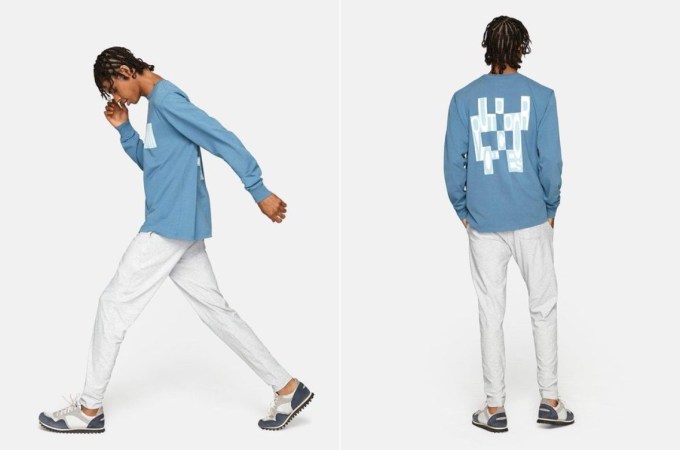
Image Credits: Outdoor Voices
By about early-April of this year, it was clear that comfort was king but that getting dressed up for the work day was a radical act of self care. I’ll admit, I’ve gone through ebbs and flows, but I eventually landed on a solution that skewed heavily towards comfort. I doled out some cash on some very comfy, activewear sweatpants from Outdoor Voices. I opted for the Sunday sweatpants during a sale and stocked up on a couple pairs. Spending as much on sweatpants as I would on some dress pants required some mental gymnastics to justify, but surviving 2020 is an exercise in flexibility.
Daily Latte
I got real lazy with coffee this year. Last year, I was hipstered to the nines with a great pour-over coffee setup including a gooseneck kettle and a Chemex. In early quarantine after nearly everything had shut down in SF, an afternoon trip to the coffee shop became one of the few moments in the day to clear my head and refocus my brain. That got expensive over time as my latte addiction grew, I also gained like 15 pounds which I can attribute to several bad habits. Fast forward to present and I’ve boarded the Nespresso train again after a hiatus, this time using a new machine from their Vertuo line which boasts double espresso shot pods which have been a godsend. I’ve been teaming a double shot with some oat milk frothed in one of their Aeroccino machines. Yum.
Atoms Masks

Image Credits: Atoms
I love these masks, they’re comfy, easy to clean and were a great upgrade from other face-hugging solutions. Lots of sizes and fun colors have made these a great option to inject some personality into pandemic wear.
Travis Bernard, Senior Director of Membership
Barry’s At-Home
Exercising during the pandemic hasn’t been easy. Gyms are closed, and most don’t have exercise machines at home. I’ve always been a big fan of Barry’s Bootcamp for HIIT exercise classes, and now they’ve brought the experience into your living room with Barry’s At-Home. The 45-minute virtual classes will get your heart rate up and help shed the pounds you put on in 2020. I’ve done well over 100 Barry’s At-Home classes this year, and it’s been a wonderful way to keep my mind and body optimized for performance.
National Parks Annual Pass
Digital detox was much needed in 2020. My wife and I had a chance to visit three national parks this year, and it was one of the best ways to get away from our devices. It’s amazing what a day of hiking will do for your mindfulness. The National Parks Annual Pass will run you $80 and gets you access to all the National Parks and Federal Recreational Lands.


Source: Tech Crunch





